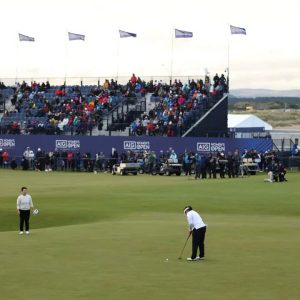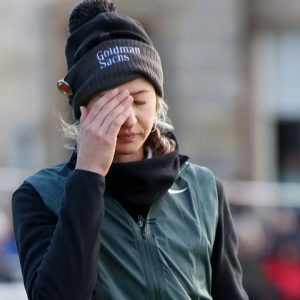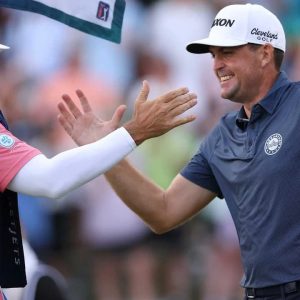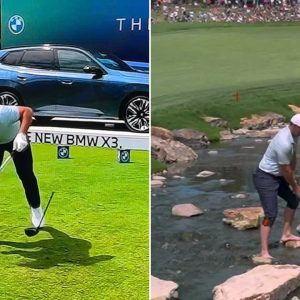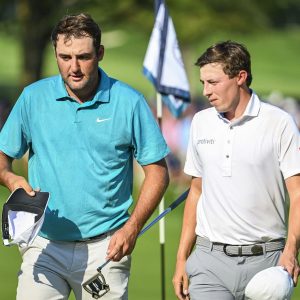Bryson DeChambeau’s 3D printed irons have bulge. Learn what that means and what it might do
Photo: Andrew Redington/Getty Images
Using a custom-made set of 3D-printed Avoda irons, Bryson DeChambeau shot an opening-round 65 at Augusta National and was in contention at this season’s Masters before nearly winning last month’s PGA Championship at Valhalla Country Club.
The idea that his Avoda irons are 3D printed got everyone’s attention, as did the fact that they were approved for play by the USGA on the Monday of Masters week, but there is something else that makes them very unique: DeChambeau’s irons have curved faces.
You may not have noticed it, but your driver, fairway woods and hybrids are designed with faces that curve slightly from side to side and from top to bottom. The curvature from heel to toe is called a bulge, and the curve from the leading edge to the topline is referred to as a roll.

Irons, however, have flat hitting areas, and equipment companies often go to great lengths to make faces that are perfectly flat, so DeChambeau’s 3D-print Avoda irons are especially unique.
The gear effect
Playing the 12th hole during his practice round on Tuesday, DeChambeau talked with Golf Channel’s Johnson Wagner about his clubs and explained why he wanted curved iron faces.
U.S. OPEN: Tournament hub | Hole-by-hole | Odds, picks | How to watch
“The curvature on the face is kind of like a driver or a hybrid or whatnot,” he said. “It kind of caves in on the heel and caves in on the toe. So for the speeds that I have, when I hit it on the toe or the heel, it doesn’t over-correct. Most people think that MOI there, it doesn’t really effect the curvature, but it actually does at my speeds, at lower lofted and higher speeds. So, essentially, when I was hitting it on the toe I was hooking it like crazy. On the heel, I was missing it right like crazy. So I created curvature on the toe and the heel to get it started a little farther right on the toe and on the heel start it a little father left so it makes sure it doesn’t go too far offline. Much like the driver.”
Bryson DeChambeau’s Adoda irons
Bryson DeChambeau’s Adoda irons have faces that curve from heel to toe. (David Dusek/Golfweek)
The situation that DeChambeau described to Wagner was, basically, an explanation of the gear effect, a very golf-y sounding term that most players don’t understand.
When a golf ball is struck on the toe or heel, the clubhead twists and imparts sidespin on the ball. On toe-side shots, the spin is counter-clockwise, so a right-hander’s shot will start to the right but hook back to the left. Conversely, heel misses often start left and then slice to the right. Like two gears that are enmeshed, when one spins, so does the other, but in the opposite direction.
So when DeChambeau described his iron shots to Wagner and said, “When I was hitting it on the toe I was hooking it like crazy. On the heel, I was missing it right like crazy,” he was describing the gear effect.
Bulge to compensate for the gear effect
So toe-side misses hook to the left and heel-side misses typically cut to the right, but now factor in Bryson DeChambeau’s ultra-high clubhead speed and the effect is magnified. His misses really hook and slice because his swing speed generates more overall spin than most golfers. Like other heavy hitters, the gear effect for DeChambeau is magnified, but a curved driver, fairway wood or hybrid face can help to compensate for it.
By curving the hitting area so the toe-side points slightly to the right, a toe-side miss will start even farther to the right before hooking left, resulting in a shot that finishes more in line with the intended target. Similarly, curving the heel area more to the left will start heel misses more to the left before the gear-effect created spin brings them to the right.
What Bryson DeChambeau is doing is trying to bring science designed into woods to his irons.
So why don’t all irons have bulge?
If golf equipment companies have known about the gear effect for decades, and they have, why don’t they add bulge irons instead of designing it only into drivers, fairway woods and hybrids?
Golfweek reached out to a veteran who asked to have his name and company unidentified because he does not work with Bryson or Avoda, and he said it all has to do with the type of spin clubs generate and other factors in their design.
“Irons don’t need a ton of bulge and roll because of the backspin they impart,” he said. For example, a well-fit driver might create between 2,000 and 2,500 rpm of backspin while a typical 5-iron generates about 5,000 rpm of backspin for the same player. With that much backspin, there will not be as much sidespin generated on the 5-iron, and even 5-irons mis-hit on the toe side won’t create as much sidespin as drivers hit on the toe side, so an iron face that has bulge won’t have much effect for the vast majority of golfers.
“Even at his speed, the irons are so short that the amount of twist that is happening and the amount of gear effect that is being imparted is a lot smaller [than the gear effect on a driver shot],” the veteran engineer said.
“I’d argue that you just don’t need it on an iron,” he added.
